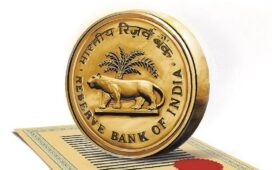Interest rates on bank accounts can play a significant role in growing your savings over time. Different types of bank accounts offer varying interest rates, with some designed primarily for saving and others for facilitating daily transactions. Knowing which type of bank account typically offers the least interest can help you make informed decisions about where to keep your money depending on your financial goals. In this article, we will identify the type of bank account that generally offers the least (if any) interest.
The Checking Account: A Closer Look
Checking accounts are primarily designed to be transactional accounts, providing an easy and convenient way for individuals to deposit and withdraw funds regularly. These accounts usually come with check-writing privileges, debit cards, and options for electronic funds transfers. Because of the transactional nature of these accounts, banks typically offer little to no interest on the money kept in checking accounts. Let’s delve into the reasons behind this:
- Frequency of Transactions: Checking accounts are meant for frequent use, with customers depositing and withdrawing money regularly. This high frequency of transactions makes it less lucrative for banks to offer interest as the balance doesn’t remain static.
- Operational Costs: The services provided with checking accounts, such as ATM access, check processing, and online banking, come with operational costs for the bank. These costs sometimes offset the potential for earning interest.
- Low Minimum Balances: Often, checking accounts do not require high minimum balances, which means that the bank doesn’t have as much capital to utilize for lending or other income-generating activities.
Comparing to Other Types of Accounts
- Savings Accounts: Unlike checking accounts, savings accounts are designed for individuals to save money over time. They typically offer higher interest rates than checking accounts, though still relatively modest.
- Money Market Accounts: Money market accounts often offer even higher interest rates than regular savings accounts. They are designed for larger deposits and often have restrictions on the number of transactions that can be made each month.
- Certificates of Deposit (CDs): CDs usually offer the highest interest rates of the standard bank accounts. They require you to deposit a fixed amount of money for a fixed period, during which you cannot access the funds without incurring penalties.
Making the Most of Your Money
If your goal is to earn interest on your deposits, it is advisable to keep only the necessary funds for daily transactions in your checking account and put the rest in a savings account, money market account, or CD. Some banks also offer high-interest checking accounts, which combine the features of checking and savings, though these usually come with certain requirements such as a minimum number of transactions per month.
Conclusion
Checking accounts are essential for day-to-day financial activities but typically offer the least (if any) interest among the common types of bank accounts. When planning your finances, it’s wise to utilize a combination of account types to ensure both the liquidity and growth of your funds. By understanding the purpose and features of different bank accounts, you can make informed decisions that align with your financial goals.










